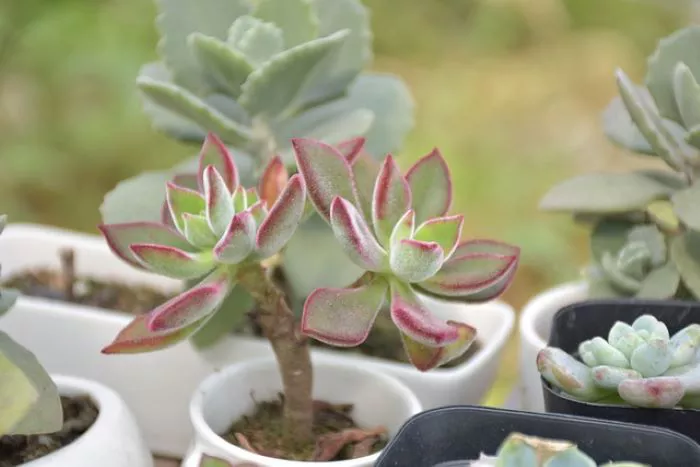Artificial succulents have gained popularity for their beauty and low maintenance requirements. They provide the aesthetic appeal of real succulents without the need for watering or sunlight. Creating an artificial succulent arrangement allows you to design a unique centerpiece or decorative piece for your home or office. This article will guide you through the process of making an artificial succulent arrangement. You will learn about the materials needed, design principles, and step-by-step instructions.
Understanding Artificial Succulents
Artificial succulents are made from various materials such as plastic, silk, or foam. They mimic the appearance of real succulents but do not require any care. These plants are available in various shapes, sizes, and colors, making them versatile for any decor style. Artificial succulents are ideal for those who want to enjoy the beauty of plants without the commitment of caring for live ones.
Gathering Materials
Before you begin, gather all the necessary materials for your arrangement. You will need the following items
Artificial succulent plants in various sizes and shapes
A container or pot for the arrangement
Floral foam or a base material to secure the plants
Decorative stones or gravel for added texture
Scissors or wire cutters for trimming stems
Optional decorative elements such as moss, ribbons, or additional embellishments
Choosing the right container is crucial. You can use a traditional pot, a wooden box, or even a glass terrarium. Ensure that the container complements the style of the succulents and fits well in your intended display area.
Designing Your Arrangement
Designing an artificial succulent arrangement involves considering balance, color, and texture. Start by selecting a color palette. Succulents come in various colors, from vibrant greens to deep purples and even pinks. Choose colors that complement each other and fit the overall decor of the space.
Next, consider the size and height of the succulents. Use taller plants in the center or back of the arrangement and shorter ones in the front. This creates depth and visual interest. Mixing different shapes and sizes of succulents will enhance the arrangement’s overall appeal.
Preparing the Container
Once you have chosen your materials and designed your arrangement, it’s time to prepare the container. If you are using floral foam, cut it to fit snugly inside the container. Soak the foam in water if you want to add moisture to the arrangement, but this is optional for artificial succulents.
Place the foam inside the container and secure it if necessary. If you are using a container without drainage holes, you can skip soaking the foam. If you prefer, you can also fill the bottom of the container with decorative stones or gravel to create a base.
Arranging the Succulents
Now it is time to arrange the artificial succulents. Start by inserting the larger plants into the foam or base material. Position them at varying angles to create a natural look. Ensure that the stems are securely anchored in the foam or gravel.
Next, add the medium-sized succulents around the larger ones. Fill in any gaps with smaller plants. Step back occasionally to assess the arrangement from different angles. Make adjustments as needed to achieve a balanced and visually appealing design.
Adding Decorative Elements
To enhance your artificial succulent arrangement, consider adding decorative elements. This can include decorative stones, pebbles, or gravel sprinkled on top of the foam or around the plants. These elements provide texture and mimic the look of a natural succulent garden.
You can also add moss for a touch of greenery. If you want to personalize your arrangement, consider incorporating ribbons, small figurines, or other embellishments that reflect your style.
Final Touches
Once you are satisfied with the arrangement, take a moment to make any final adjustments. Ensure that all plants are securely positioned and that the overall design looks cohesive. If you used floral foam, make sure it is not visible from the top. You can cover it with decorative stones or moss for a polished look.
If you plan to display the arrangement in a bright area, consider using UV-resistant artificial succulents to prevent fading over time.
Caring for Your Arrangement
One of the advantages of artificial succulent arrangements is their low maintenance. Unlike real plants, they do not require watering or sunlight. To keep your arrangement looking fresh, dust it occasionally with a soft cloth or feather duster. If the arrangement gets dirty, you can wipe it clean with a damp cloth.
Avoid placing the arrangement in direct sunlight for extended periods, as this can cause colors to fade. Instead, display it in a location that receives indirect light.
Conclusion
Creating an artificial succulent arrangement is a fun and rewarding project. With the right materials and design principles, you can craft a beautiful piece that adds charm to any space. Artificial succulents offer the beauty of real plants without the need for care, making them an excellent choice for busy individuals or those with limited gardening skills. By following the steps outlined in this article, you can successfully create your own stunning artificial succulent arrangement. Enjoy the process and let your creativity shine.


